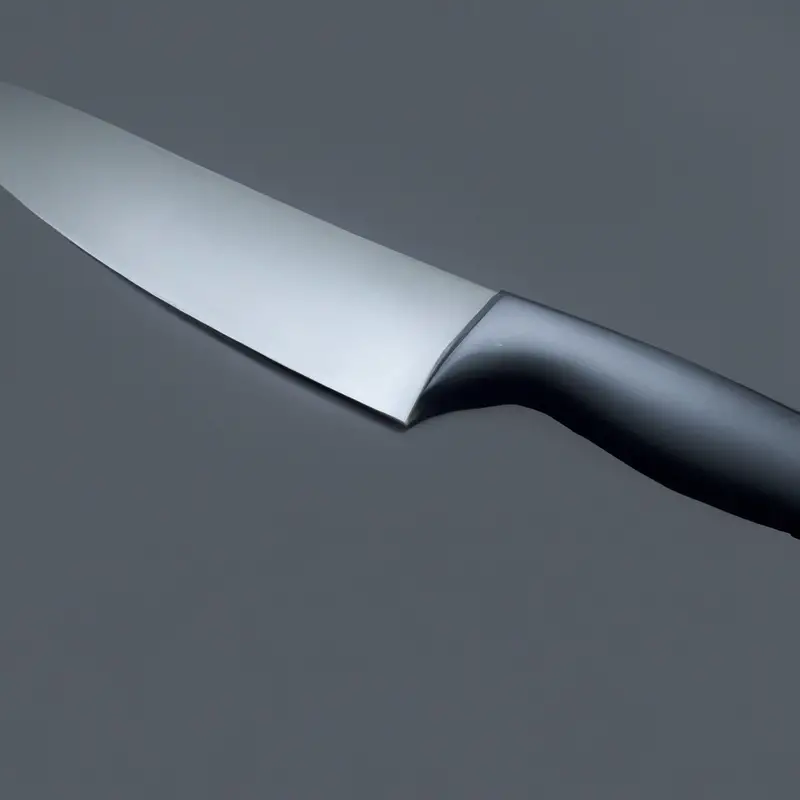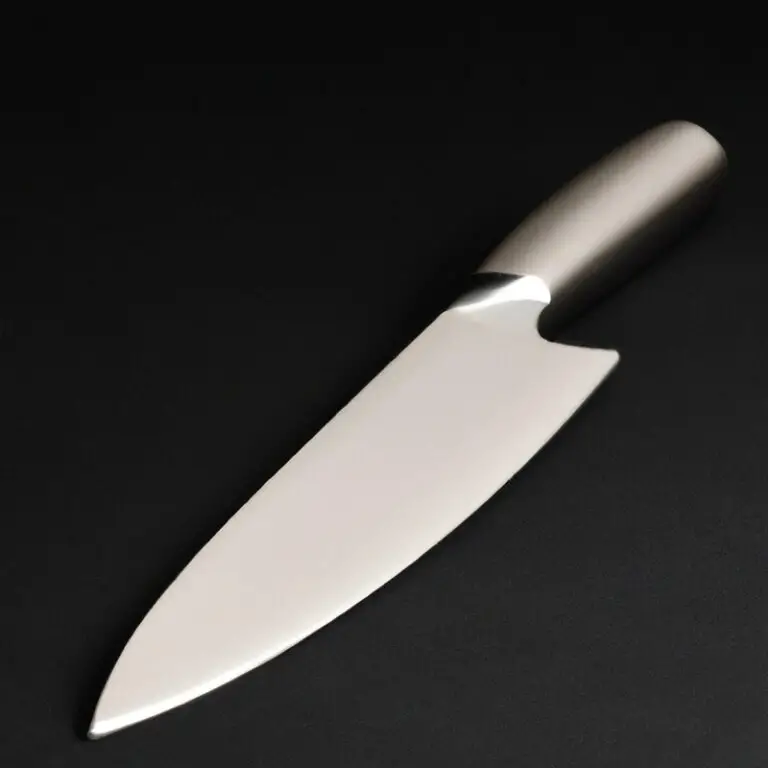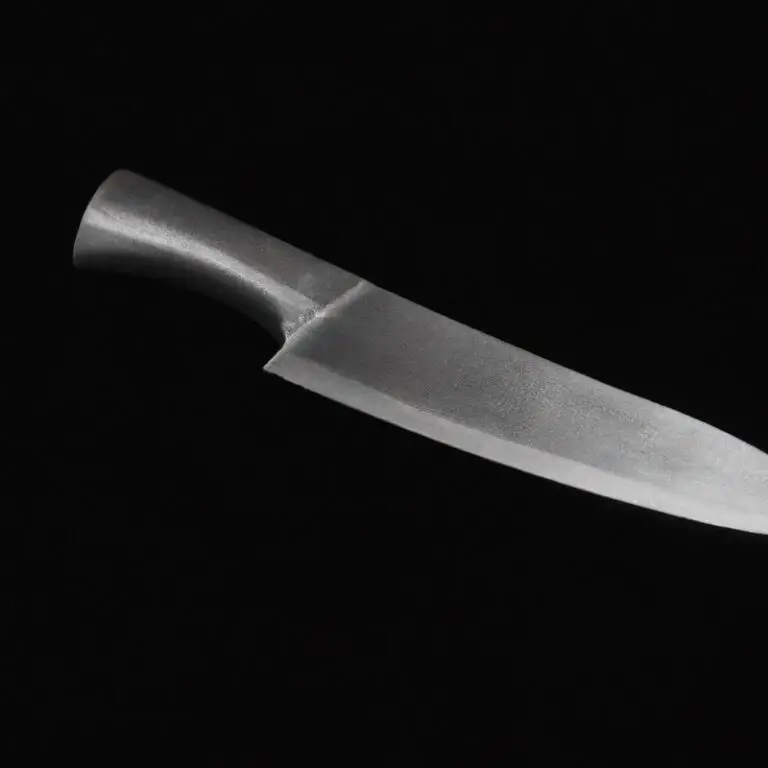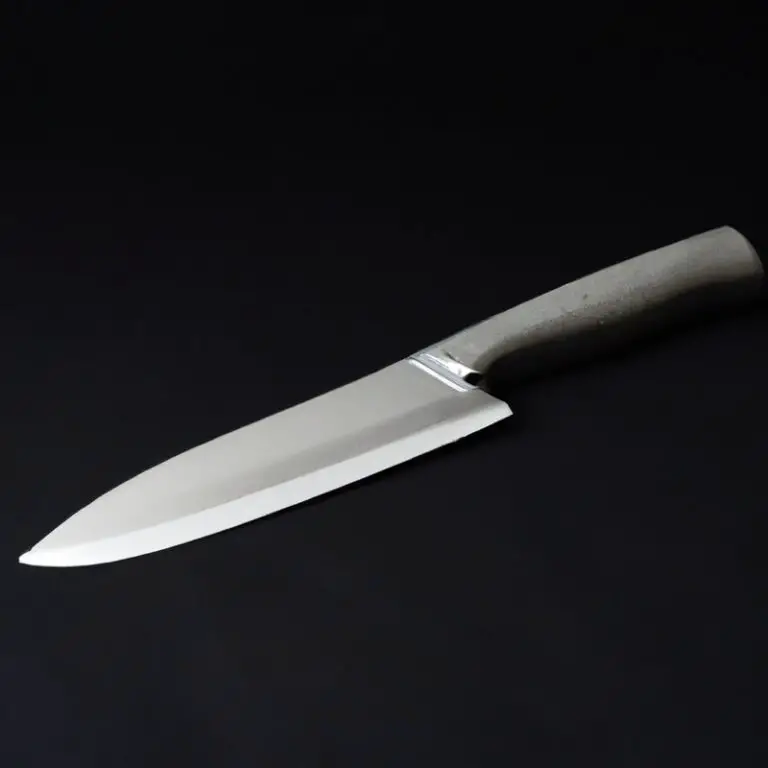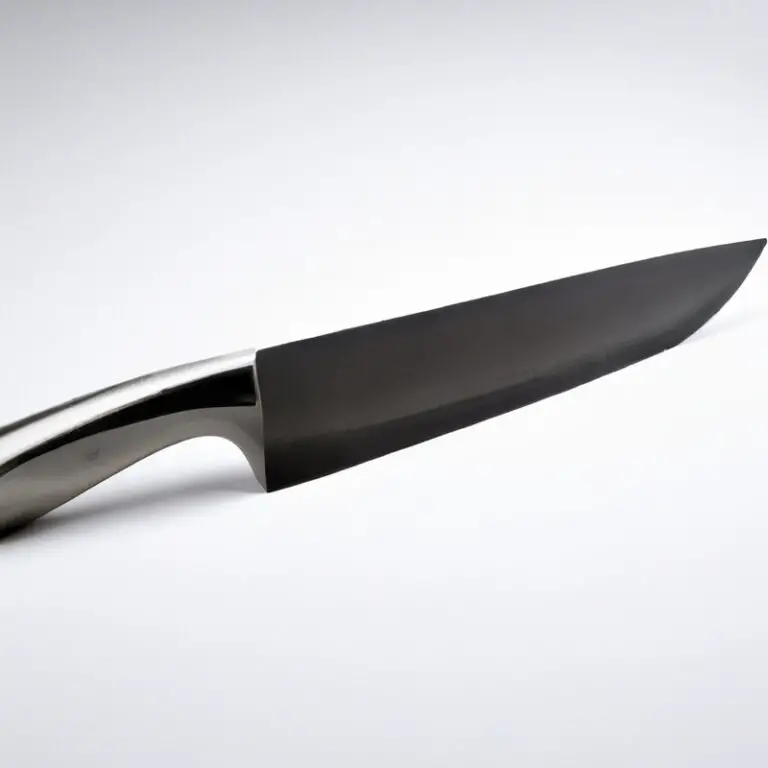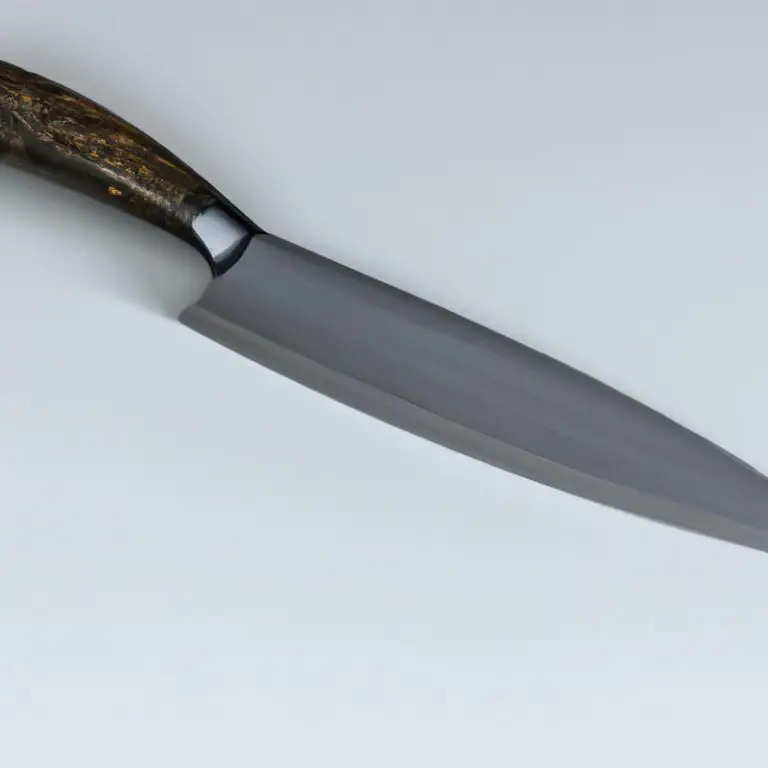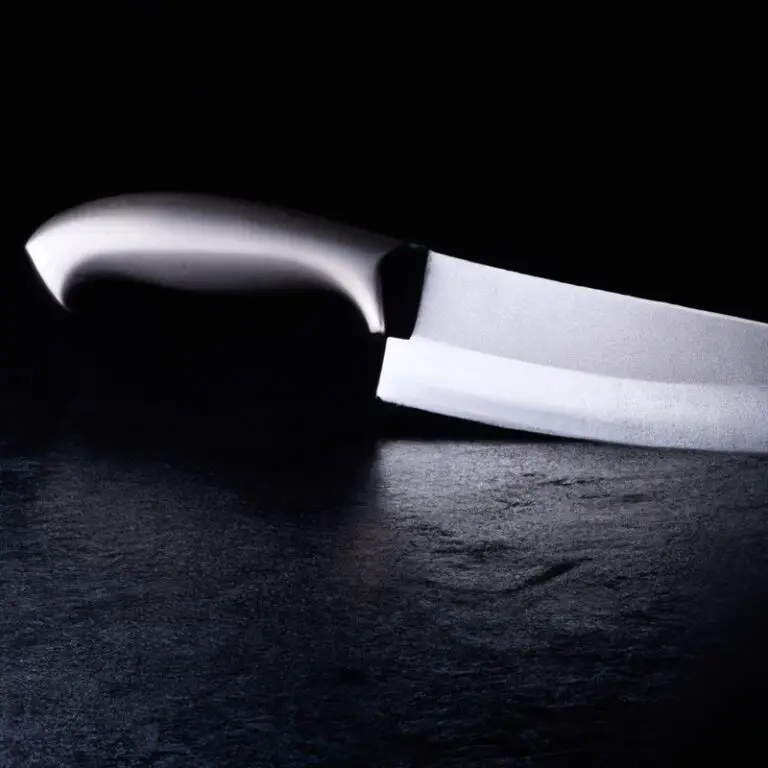Can You Use a Santoku Knife For Portioning Pork Chops? Expert Opinion
Key Takeaways:
- While Santoku knives can be used for a variety of tasks, they may not be the best choice for portioning thick cuts of meat like pork chops.
- When portioning pork chops, it’s important to have a sharp, sturdy blade with a pointed tip to easily separate the meat from the bone.
- A traditional butcher knife or a dedicated meat cleaver may be a better option for portioning pork chops, ensuring clean and precise cuts.
- Regardless of the knife used, it’s crucial to have basic knife skills and proper technique to ensure safety and optimal results in the kitchen.
As a home cook, you may have wondered if your trusty Santoku knife is up to the challenge of portioning pork chops. While traditionally a butcher’s knife has been the go-to tool for the task, the Santoku knife’s popularity has skyrocketed in recent years.
As an experienced cook myself, I have tried both knives and can attest to the differences between them.
In this article, we will explore the anatomy of a pork chop and how it affects the type of knife you use, the cutting technique required for a Santoku knife, and tips on maintenance to ensure precision and durability. Let’s dive in!
| Santoku Knife | Paring Knife | Chef’s Knife | |
|---|---|---|---|
| Blade Length | 5-7 inches | 2-4 inches | 8-12 inches |
| Blade Shape | Straight | Curved | Straight |
| Purpose | All-Purpose | Paring and Garnishing | All-Purpose |
| Suitable for Portioning Pork Chops? | Yes* | No | Yes |
| Additional Features | Shorter and lighter | Small and precise | Longer and heavier |
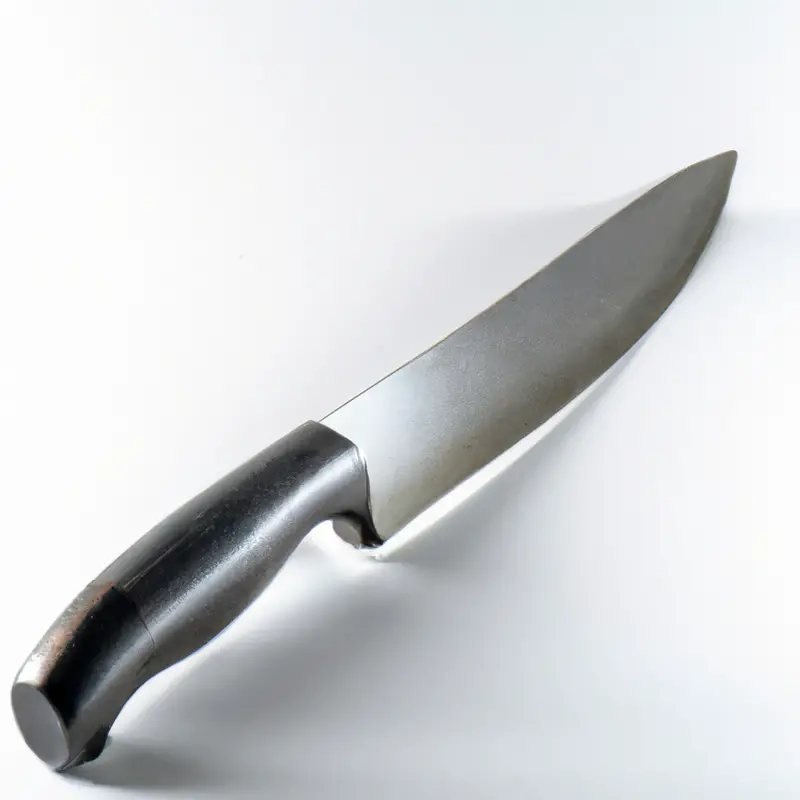
The Differences Between Santoku and Butcher Knives for Portioning Pork Chops
Santoku knives and butcher knives are both used for portioning pork chops, but they have significant differences. Santoku knives are typically lighter and have a shorter blade, which makes it easier to maneuver and control.
They also have a sharper, thinner blade that makes cleaner cuts, resulting in smoother and even slices.
However, they may not be suitable for heavier-duty tasks, such as cutting through bones. On the other hand, butcher knives are heavier and have a longer, wider blade that makes them ideal for cutting through bones and tougher cuts of meat.
They provide greater leverage and force, which makes the task of portioning pork chops easier and faster, especially when dealing with larger quantities of meat.
Ultimately, the choice between a Santoku knife and a butcher knife comes down to personal preference and the task at hand. If you value precision and control, the Santoku knife may be a better option.
But if you prioritize efficiency and power, the butcher knife is likely to be a better choice.
Santoku Knives: An Overview of Their Features and Benefits
Santoku knives are a Japanese-style knife that has become a popular choice for many chefs around the world. The name “Santoku” means “three virtues,” and it is designed to excel at slicing, dicing, and mincing.
One of the main features of Santoku knives is their blade design.
They typically have a shorter, wider blade than traditional Western-style knives, which makes them more agile and versatile. The blade is also thinner, which allows for precise cuts and less resistance when slicing through foods.
Another feature of Santoku knives is their unique blade shape.
The blade has a flat edge and a curved spine, which creates a rocking motion when chopping. This allows for faster and more efficient chopping and slicing, which can be particularly useful when preparing ingredients for a dish.
Santoku knives also typically have a Granton edge, which is a series of small divots along the length of the blade.
This helps to prevent food from sticking to the blade, making it easier to slice and reduce drag while cutting. Overall, Santoku knives are a great tool for any chef, both amateur and professional.
They offer a versatile and agile design, precise cuts, and a unique blade shape that makes chopping and slicing easier and faster.
How to Properly Sharpen Your Santoku Knife for Pork Chops Portioning
To properly sharpen your Santoku knife, you will need a sharpening stone, honing rod, or an electric sharpener.
- Start by cleaning your knife blade thoroughly.
- If you’re using a sharpening stone, soak it in water for at least 15 minutes before use.
- Hold your knife at a 15 to 20-degree angle to the sharpening surface.
- Begin by sharpening the knife’s dull side, using a circular motion, repeat the same on the other side.
- Switch to the honing rod to straighten the blade’s edge.
- Repeat the process until your blade is sharp enough to cut through the pork chops effortlessly.
Remember to maintain a consistent angle throughout sharpening, as uneven sharpening will result in a dull blade. Also, pay attention to the number of passes you make to avoid over-sharpening your blade.
The Anatomy of a Pork Chop and How It Affects the Type of Knife You Use
The anatomy of a pork chop affects the type of knife used for portioning. Pork chops consist of three main parts: the rib, loin, and tenderloin.
The rib area has bones, making it harder to cut through and requiring a heavier knife such as a butcher knife.
The loin and tenderloin areas, on the other hand, are boneless, making them easier to cut through and requiring a lighter knife such as a Santoku knife. The thickness of the pork chop also affects the type of knife to use.
Thicker pork chops require a longer and thicker blade, while thinner pork chops can be cut with a shorter and thinner blade.
Understanding the anatomy of a pork chop is essential in choosing the right knife for portioning.
Understanding the Cutting Technique to Use a Santoku Knife for Pork Chop Portioning
To properly use a Santoku knife for pork chop portioning, it’s important to understand the proper cutting technique. Begin by placing the pork chop on a cutting board with the bone facing towards you.
Hold the meat with your non-dominant hand, using your fingers to steady it while keeping them curled under for safety.
With your dominant hand, grip the Santoku knife and make a slight incision into the meat at the base of the bone. Begin to cut along the bone, using the natural curve of the blade to create a clean and precise cut.
Slowly continue cutting until the meat is separated from the bone, then repeat on the other side.
Once you have separated the meat from the bone, you can then use the Santoku knife to portion the meat into desired sizes. Remember to use a firm and steady cutting motion to ensure an even and consistent portion.
Factors to Consider When Using a Santoku Knife for Pork Chop Portioning
When using a Santoku knife for pork chop portioning, there are certain factors to consider to ensure a successful outcome. These include the sharpness of the blade, the size and thickness of the pork chop, and the type of cutting technique used.
It’s important to ensure that the blade is sharp enough to cut through the meat smoothly and efficiently, and the size and thickness of the pork chop may affect the level of precision needed.
Another factor to consider is the grip and weight of the knife. Santoku knives are typically lighter than traditional butcher knives, which may make it easier for some people to handle, but it can also mean less control over the blade.
It’s essential to find the proper grip and pressure to ensure a clean cut through the meat.
Additionally, the angle of the blade and the direction of the cut can also affect the outcome. It’s recommended to use a slight angle and a pulling motion when cutting the pork chop to avoid tearing the meat.
It’s also essential to make sure the blade is long enough to cut through the entire pork chop.
Overall, using a Santoku knife for pork chop portioning can be successful with the proper technique and consideration of these factors. It’s important to practice and make adjustments as needed to achieve the desired outcome.
Tips on Maintaining Your Santoku Knife to Ensure Precision and Durability
To ensure the precision and durability of your Santoku knife, follow these maintenance tips:
- Hand wash and dry your knife immediately after use to prevent rust and corrosion.
- Avoid using harsh cleaners or abrasive sponges on the blade.
- Sharpen your knife regularly with a sharpening stone or honing rod to maintain its blade angle.
- Store your knife in a knife block or on a magnetic strip to prevent damage and maintain the blade’s sharpness.
- Use a cutting board made of soft materials such as wood or plastic to prevent dulling the blade.
- Avoid using your Santoku knife on hard materials such as bones or frozen food to prevent chipping or damage to the blade.
By following these tips, you can prolong the lifespan of your Santoku knife and ensure it stays sharp and accurate for your pork chop portioning needs.
Cutting Pork Chops with Both Santoku and Butcher Knives: Which One Wins?
When it comes to cutting pork chops, both Santoku knives and butcher knives are suitable options. However, the winner ultimately depends on personal preference and the desired outcome.
Santoku knives are known for their versatility and precision, making them a great choice for portioning pork chops.
Their sharp, thin blade allows for easy maneuvering around bones and joints, resulting in clean cuts. However, their smaller size may not be suitable for larger cuts of meat.
On the other hand, butcher knives have a larger, thicker blade, making them ideal for heavier and thicker cuts of pork.
Their size and weight allow for more force to be applied, making it easier to cut through bones and joints. However, their larger size may make it more challenging to achieve precision cuts.
In the end, the choice between a Santoku and butcher knife comes down to personal preference and the desired outcome.
It is essential to consider the size and thickness of the pork chop before deciding which knife to use.
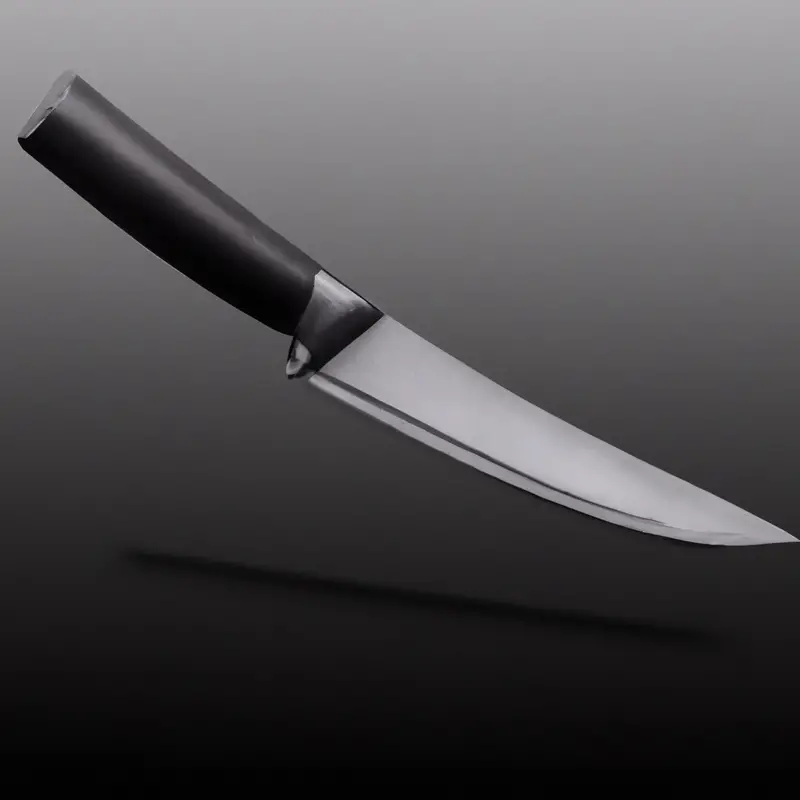
Santoku Versus Chef’s Knife: The Better Choice for Portioning Pork Chops
When it comes to choosing between a Santoku knife and a Chef’s knife for portioning pork chops, both types of knives can get the job done. However, there are some differences to consider.
Santoku knives are typically shorter and lighter than Chef’s knives, which can make them easier to maneuver when portioning smaller cuts of meat like pork chops.
They also have a flatter edge and a more rounded tip, which can make it easier to make precise cuts. On the other hand, Chef’s knives have a more curved edge, which can make them better for larger cuts of meat like roasts.
They also tend to be heavier, which can help when exerting more force is necessary.
Ultimately, the best choice for portioning pork chops comes down to personal preference and comfort. If you enjoy using a Santoku knife and feel comfortable with its features, it may be the better choice for you.
However, if you prefer a heavier knife and feel more confident using a Chef’s knife, that may be the better option.
It’s important to choose a knife that you feel comfortable and confident using to ensure safety and precision in your cuts.
The Pros and Cons of Using a Santoku Knife for Other Meat Cuts Besides Pork Chops
Pros:
- Versatile: Santoku knives can be used for different types of meat cuts, including chicken, beef, and fish.
- Lightweight: The lightweight nature of Santoku knives makes them easy to maneuver, facilitating precision cuts.
- Clean Cuts: With a sharp blade, a Santoku knife can deliver clean, precise cuts, which ensures the meat maintains its texture, flavor, and juiciness.
Cons:
- Limited Thickness: The thin blade of Santoku knives limits the thickness of meat cuts, making them inadequate for larger or tougher meats.
- Single bevel Blade: The single bevel blade of Santoku knives limits their flexibility, making them less versatile compared to other knives with a double bevel.
- Durability: While Santoku knives are versatile, they require proper maintenance and sharpening to remain sharp and prevent damage, which can impact their durability.
Final Verdict
A Santoku knife can be a suitable option for portioning pork chops with its unique features like a sharp and wide blade, lightweight, and comfortable handle. However, it is crucial to understand the cutting technique, anatomy of the pork chop, and the factors to consider.
Proper maintenance and sharpening of the knife are also crucial for precision and durability.
While the Santoku knife may work for pork chops, it may not be the best option for other meat cuts or heavier-duty tasks. Ultimately, the choice between a Santoku or a butcher knife for pork chop portioning comes down to personal preference and comfort.
By following the tips and guidelines discussed in this article, you can make an informed decision and ensure a successful outcome in your kitchen.
Remember, always prioritize safety, precision, and the quality of your food.

